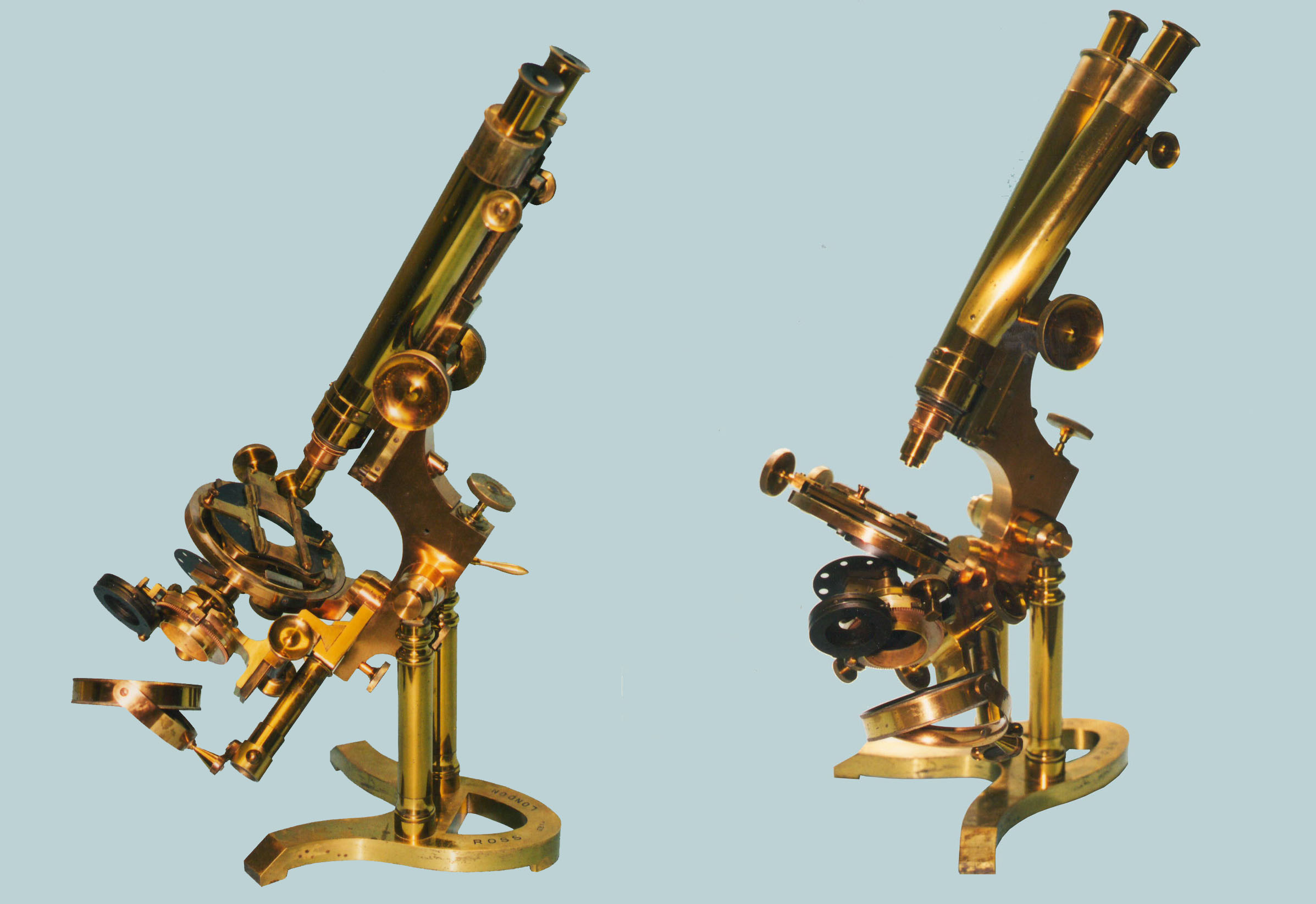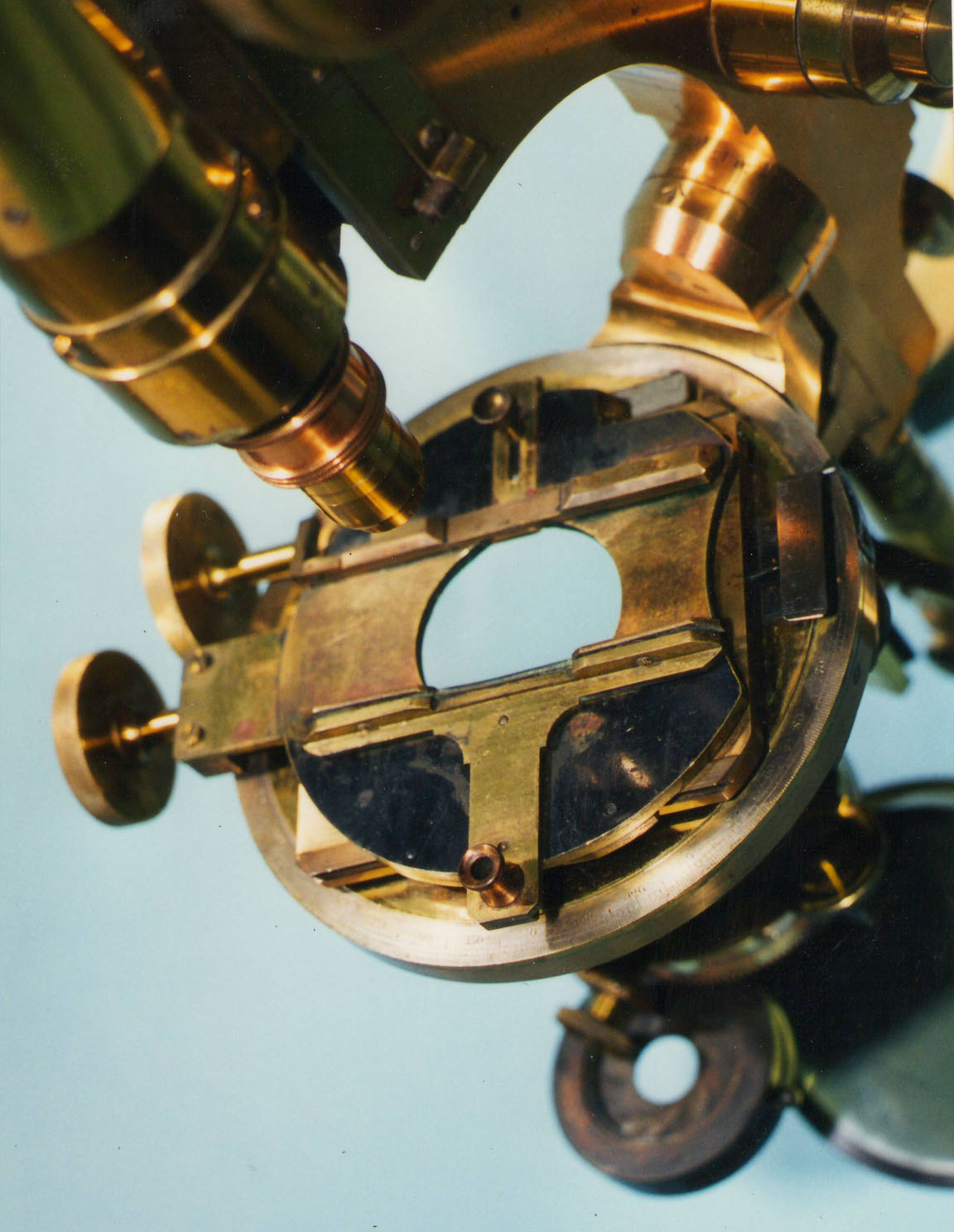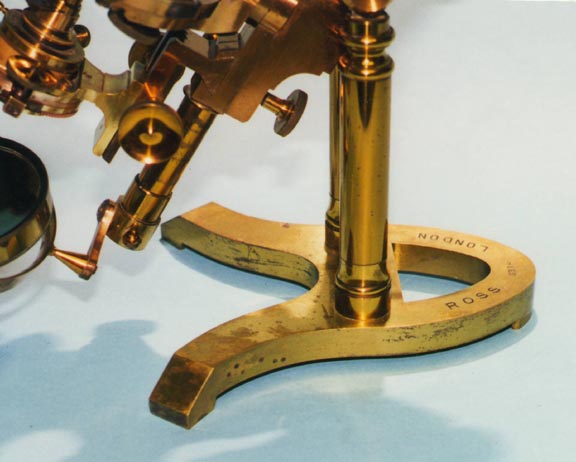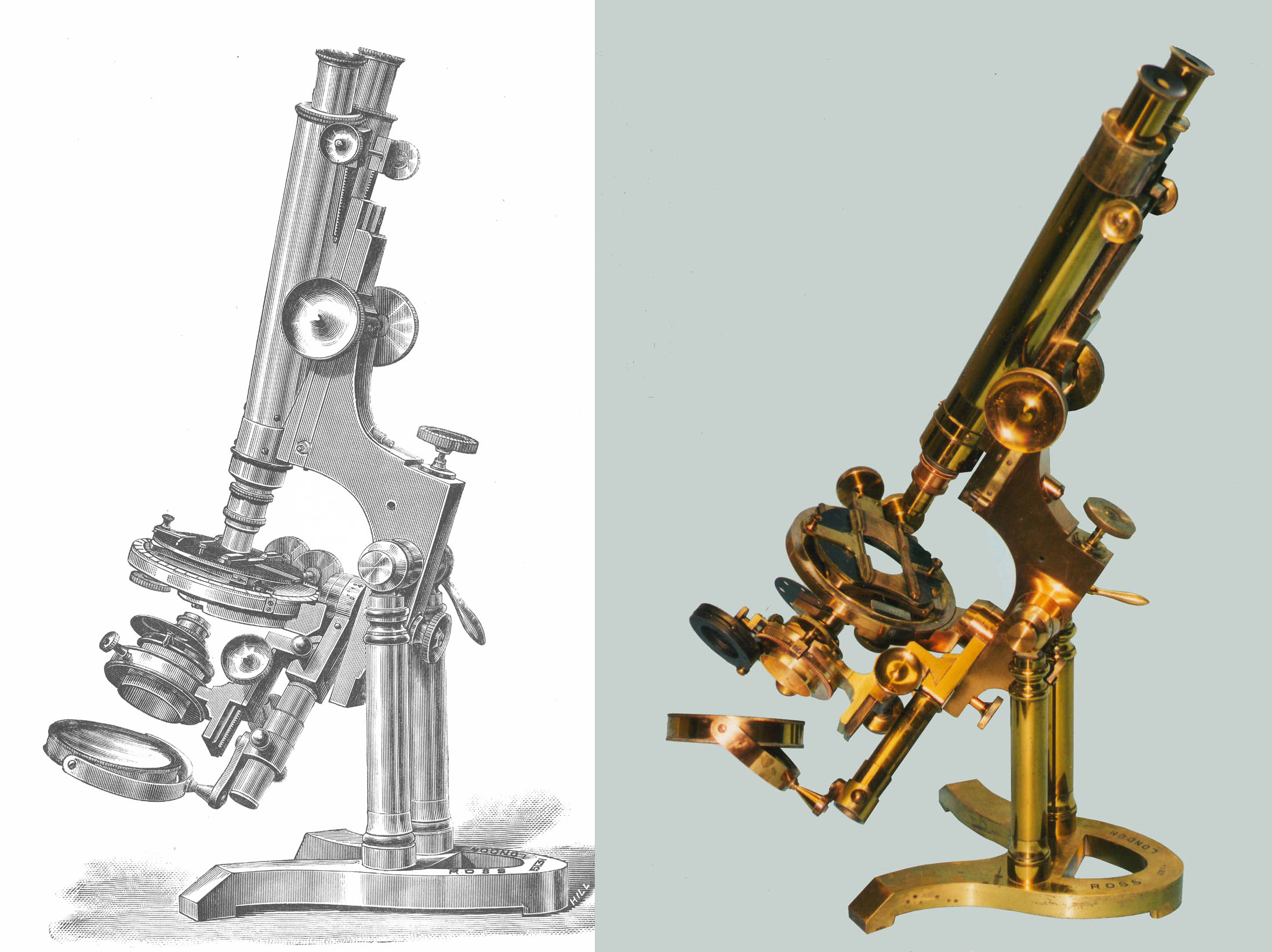MICROSCOPE-ANTIQUES.COM © 2013-15.
ROSS-ZENTMAYER MICROSCOPE
c. 1880
SIGNED: 'ROSS LONDON'
SERIAL NUMBER:5218(?)
MODEL: PATENT BINOCULAR MICROSCOPE No. 2
Please Click On Any Picture for a Larger Version

DESCRIPTION:

 This instrument, unfortunately no longer in my collection, is Signed on the A-shaped Foot:
This instrument, unfortunately no longer in my collection, is Signed on the A-shaped Foot: ROSS LONDON
In Addition, there is a serial number on the edge of the foot which appears to be 5218. It is of Jackson/Lister limb construction. There is a binocular tube with rack and pinion adjustment to the interocular distance. The stage has rotational movement with silvered scale, and a X and Y mechanical stage with separate silvered calibration scales for each of these two as well. The stage has set screws allowing it to be perfectly centered. Rotation of the stage is actuated by rack and pinion, much like the system on older large Ross stands, such as the Exhibition model on this web site. The entire stage is attached via a conical fitting which passes through the limb and was designed to be removed and replaced by any type of specialty stage the user wished. The body tube coarse focus is by diagonal rack and pinion, fine focus by long-lever fine threaded screw. The swinging substage tailpiece has calibrations every 15 degrees. It can rotate fully and even above the stage if a short condenser or no condenser is used. There is a large gimballed plano-concave mirror. The stand erects on an axle through two circular pillars and there is a handle for tightening the axle to lock the stand in any position. The substage has rack and pinion focusing, and is integrated into the swinging tailpiece. There is a centering adjustment by two set screws for the substage and the entire substage is dovetailed into the tailpiece and may be removed by loosening a set screw.
The substage also has a rack and pinion adjustment for rotation similar to the mechanism of the earlier Ross stands, again also seen on the Ross exhibition model on this web site. The condenser assembly has a swing-out iris beneath it.
HISTORY:
 After Thomas Ross, son of Andrew, died in the early 1870's the famous microscopist Francis Wenham took over the management of the Ross firm. Among his prior inventions were the Wenham binocular tube. He soon recognized the practical applications of the swinging substage, and the long-lever fine focus, both innovations of the Great American Microscope manufacturer Joseph Zentmayer. Wenham undertook construction of the famous Ross-Zentmayer microscopes and these dominated the 1885 catalog of Ross microscopes. They were available in at least four different sizes, most as monocular or binocular. These were referred to in the Ross Catalog of 1885 as the 'Ross
Zentmayer Microscope-stand' and were also called the 'No. 1 (or 2 or 3 or 4)Patent Microscope'. The stand was also available with a 'English' or 'Crouch' type foot. An example of the No 1 stand is also shown on this site and the No 4 is shown on the page with the No 1.
After Thomas Ross, son of Andrew, died in the early 1870's the famous microscopist Francis Wenham took over the management of the Ross firm. Among his prior inventions were the Wenham binocular tube. He soon recognized the practical applications of the swinging substage, and the long-lever fine focus, both innovations of the Great American Microscope manufacturer Joseph Zentmayer. Wenham undertook construction of the famous Ross-Zentmayer microscopes and these dominated the 1885 catalog of Ross microscopes. They were available in at least four different sizes, most as monocular or binocular. These were referred to in the Ross Catalog of 1885 as the 'Ross
Zentmayer Microscope-stand' and were also called the 'No. 1 (or 2 or 3 or 4)Patent Microscope'. The stand was also available with a 'English' or 'Crouch' type foot. An example of the No 1 stand is also shown on this site and the No 4 is shown on the page with the No 1.



